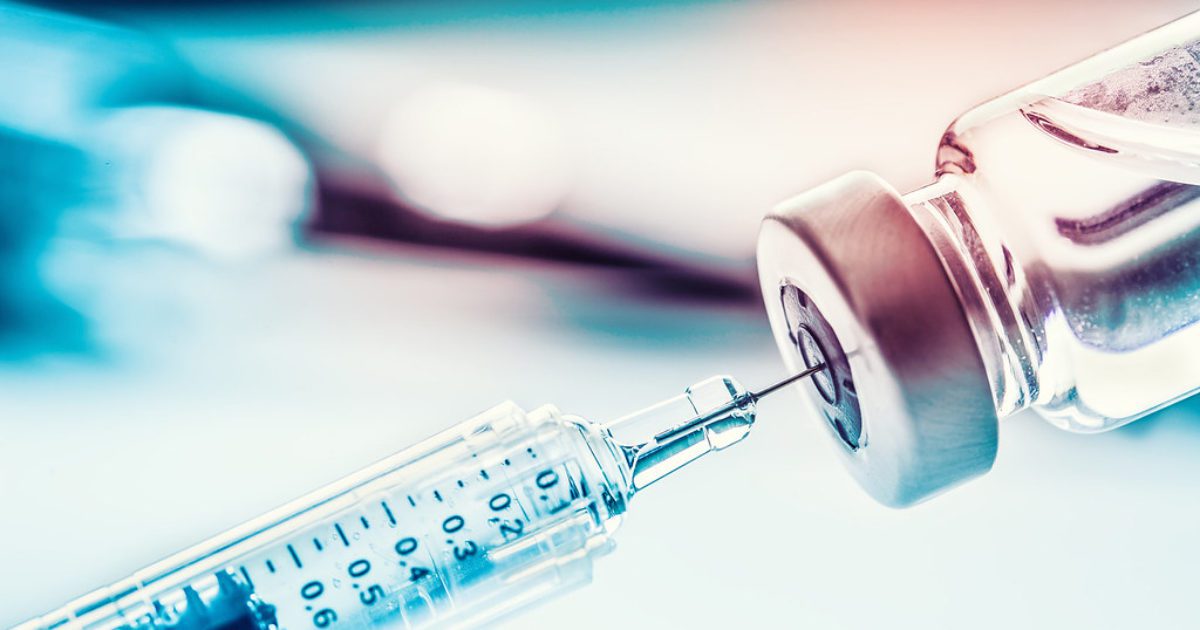The vaccine pushers preying on children shout “follow the science,” and the COVID-19 injection is “safe and effective” for children.
What science are they following?
Healthy children have a 99.9973% survival rate from COVID-19 and statistically have a higher risk of critical illness from influenza.
COVID 19 is less serious than the flu for kids and more serious than the flu for the elderly with comorbidities.
“our data indicate that children are at far greater risk of critical illness from influenza than from COVID-19” 6/n https://t.co/pHnVUzFBLR— Abir Ballan (@abirballan) March 4, 2021
Children 5-14 years old are at higher risk of dying by suicide than Covid.
Children 1-4 are at higher risk of dying of influenza than Covid. pic.twitter.com/cpdcB186OQ
— Aaron Kheriaty (@AaronKheriatyMD) September 25, 2021
There’s zero evidence that justifies inoculating children with these experimental injections.
A recent study published in Clinical Infectious Diseases raises major red flags concerning the risk of myocarditis and pericarditis in adolescents.
But real quick, let’s share a piece of information for the “follow the science” crowd.
What is Clinical Infectious Diseases?
From Wikipedia:
Clinical Infectious Diseases is a peer-reviewed medical journal published by Oxford University Press covering research on the pathogenesis, clinical investigation, medical microbiology, diagnosis, immune mechanisms, and treatment of diseases caused by infectious agents. It includes articles on antimicrobial resistance, bioterrorism, emerging infections, food safety, hospital epidemiology, and HIV/AIDS. It also features highly focused brief reports, review articles, editorials, commentaries, and supplements. The journal is published on behalf of the Infectious Diseases Society of America.
According to the Journal Citation Reports, the journal had a 2014 impact factor of 8.886, ranking it 9th out of 148 journals in the category “Immunology”,[1] second out of 78 journals in the category “Infectious Diseases”[2] and ninth out of 119 journals in the category “Microbiology”.[3]
Clinical Infectious Diseases published a study titled “Epidemiology of Acute Myocarditis/Pericarditis in Hong Kong Adolescents Following Comirnaty Vaccination” on November 28th.
The study’s findings from Hong Kong adolescents should put every parent on high alert.
"ALL adolescents aged between 12 and 17 years following Comirnaty vaccination were monitored under the COVID-19 vaccine Adverse Event Response and Evaluation Programme. https://t.co/TACCJP9Pc7
— Josh Stevenson (@ifihadastick) December 1, 2021
Some concerning data regarding mRNA vaccine myocarditis in this study from Hong Konghttps://t.co/9HHepyl2xB
— RarefiedMD (@DenseMD) December 1, 2021
https://twitter.com/rfsquared/status/1465818004046942217
https://twitter.com/SeivwrightTrudy/status/1465814230364569603
BREAKING: Researchers have found a SIGNIFICANT increase in the risk of acute myocarditis/pericarditis following Pfizer vaccination among male adolescents, especially after the second dose. 37 per 100,000 or 1 in 2,680 vaccinated.
SERIOUS safety signal.https://t.co/ZO61yz2liR— Virginia Nicholls (@Virg21Nicholls) November 30, 2021
Incidence rate of acute myocarditis/pericarditis following the 2nd dose of the Comirnaty (Pfizer) vaccine in Asian male adolescents was 37.32 (95% CI 26.98-51.25) per 100,000 vaccinated.
1 in 2,700
Is harder than usual to be a pediatrician these days.https://t.co/g5J6JG7n9Z
— Levan Djaparidze (@LDjaparidze) December 1, 2021
The world-wide human experiment of untested novel vaccine technology shows increasing evidence for severe side effects: an increased risk of acute myocarditis/pericarditis in young men, especially after the 2nd dose.
Stop pharmaffia-driven pseudoscience.https://t.co/agf46Kcf2e
— Pieter Borger (@BorgerPieter) December 1, 2021
I’ve pasted the results from Clinical Infectious Diseases and highlighted critical details:
MethodsThis is a population cohort study in Hong Kong that monitored adverse events following immunization through a pharmacovigilance system for COVID-19 vaccines. All adolescents aged between 12 and 17 years following Comirnaty vaccination were monitored under the COVID-19 vaccine Adverse Event Response and Evaluation Programme. The clinical characteristics and overall incidence of acute myocarditis/pericarditis in adolescents following Comirnaty vaccination were analysed.
ResultsBetween 14 June 2021 and 4 September 2021, 33 Chinese adolescents who developed acute myocarditis/pericarditis following Comirnaty vaccination were identified. 29 (87.88%) were males and 4 (12.12%) were females, with a median age of 15.25 years. 27 (81.82%) and 6 (18.18%) cases developed acute myocarditis/pericarditis after receiving the second and first dose, respectively. All cases are mild and required only conservative management. The overall incidence of acute myocarditis/pericarditis was 18.52 (95% Confidence Interval [CI], 11.67-29.01) per 100,000 persons vaccinated. The incidence after the first and second doses were 3.37 (95%CI 1.12-9.51) and 21.22 (95%CI 13.78-32.28 per 100,000 persons vaccinated, respectively. Among male adolescents, the incidence after the first and second doses were 5.57 (95% CI 2.38-12.53) and 37.32 (95% CI 26.98-51.25) per 100,000 persons vaccinated.
ConclusionsThere is a significant increase in the risk of acute myocarditis/pericarditis following Comirnaty vaccination among Chinese male adolescents, especially after the second dose.
The incidence rate of acute myocarditis/pericarditis in male adolescents following the 2nd dose was 37.32 out of 100,000 vaccinated individuals.
According to this study’s findings, 1 out of every 2,680 adolescent males would develop acute myocarditis/pericarditis.
Let’s reference this study from the NCBI Library about the mortality rate of acute myocarditis:
All patients diagnosed or suspected to have acute myocarditis should be admitted to the hospital and be monitored for hemodynamic instability. Immediate complications of myocarditis include ventricular dysrhythmias, left ventricular aneurysm, CHF, and dilated cardiomyopathy. The mortality rate is up to 20% at 1 year and 50% at 5 years. Despite optimal medical management, overall mortality has not changed in the last 30 years.



Join the conversation!
Please share your thoughts about this article below. We value your opinions, and would love to see you add to the discussion!